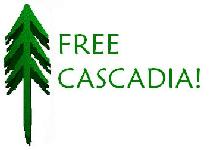|
Thomas Reimchen sums up his findings: "If you start with an egg that hatches here in a stream, it's just less than
a gram, right? And then very quickly that little fry consumes plankton, zooplankton in the stream; it moves slowly out to
the estuary. But many of the salmon on our coast at about five grams gradually move offshore and out into the open ocean.
And over two years for the pink salmon or three to four years for the other species, they grow and sequester nitrogen, phosphorus
and calcium, from the open ocean. And these tiny fry grow into these large beautiful fish. So nutrients that are being sequestered
from this distant ecosystem, these salmon then return in a mass migration like the wildebeest of the Serengeti, move back
along our coast, bringing these nutrients, that have come from the open ocean, into the estuaries where they're now taken
by seals, by sea lions, often by Orcas, before they get to the estuary, and by many species of birds that are foraging, like
eagles. These salmon then move slowly into the stream with this, again this tremendous concentration of nutrients, the nitrogen,
into the stream.
"They spawn and those salmon carcasses are then taken by the bear, which is the major vector, not the only vector,
there are wolves, there's otter, all these others are important locally. But [in] the overall effect throughout the North
Pacific, bears are the most significant factor. Over an eight-week spawning period, it was found that each bear was feeding
on about 700 salmon or 13 to 20 salmon per day."
"They take these salmon into the forest, because they like to feed undisturbed by other bears, and the nitrogen
that's present in the salmon, derived from the open ocean, then ... directly now feeds and supports the bear, like 70 percent
of the yearly consumption of protein by bears comes from these salmon. So much of the nitrogen in their bodies is derived
ultimately from that salmon. That nitrogen is from the middle of the ocean. It's not from the stream; it's from the middle
of the ocean. When the bear leave their droppings, when they urinate, that nitrogen is now taken up by the vegetation. That
vegetation is now consumed by insects or by birds. And again this nitrogen derived from the middle of the ocean is gradually
cycled through these many species and into a greater and greater wider area. So indeed, the open ocean and the insects at
the top of these trees and the birds that are sitting on top of those trees are linked in a series of [an]incredibly beautiful
set of interactions in which there's no separation at all between the community of the open ocean and the community of the
forest canopy."
Thomas Reimchen on finding remnants of salmon on the forest floor: "But then you're drawn further and further
into the forest and finding more and more remnants, salmon remnants, from carcasses that the bears have abandoned. And then
I actually learned how to find the bears by listening to the crows because crows would follow the salmon deep into the forest
and wait for the bear to finish parts of the salmon, and then as soon as the bear would leave, they would go and consume.
And so you quickly sort of were drawn great distances away from the stream."
Thomas Reimchen on the fallacy of seeing the nutrient cycle as uni-directional: "We often think of nutrients as
flowing in a direction, i.e. from the soil to the plants to the animals that eat the plants to the animals that eat the other
animals. A kind of a food chain. In the 1970s, conservation officers used to shoot bears that would feed on the salmon migrations
up the estuaries and rivers of British Columbia to compensate for what was believed at the time to be an inbalance in the
food chain, thinking that by killing some of the bears off, the numbers of fish would actually be protected." (This government
policy didn't work. The numbers of fish continued to fall.)
Thomas Reimchen on the isotope that proves the link: "The interesting thing about salmon is that they have elevated
levels of the heavy isotope of nitrogen, N-15. And it became clear that one could look at the nitrogen from these trees, from
the shrubs, from the herbs, from the mosses and determine what proportion of the nitrogen from the DNA and the proteins have
come from the salmon."
Thomas Reimchen on the benefit the forest derives from the salmon: "The salmon in effect are actually feeding
the forest, contributing a vital nutrient that it would otherwise not possess. It turns out that of all the nitrogen found
in the trees in these watershed areas, commonly over 100 metres from the rivers edge, 30 to 40 percent comes directly from
these salmon carcasses or from different species that have utilized the salmon and have cycled the nutrients into the vegetation
directly or indirectly. In areas where the salmon are found in high numbers (sometimes up to 100,000 salmon per two kilometre
of river) up to 80 to 85 percent of all of the nitrogen in these giant trees in fact is derived from salmon carcasses."
Thomas Reimchen on the interconnectedness of the forest, the river, and the ocean habitat of the salmon: "There
is no separation between these ecosystems. These areas exist as part of a continuum; they cannot be dealt with as separate
units because the nutrients cycling the flow of energy between them is part of this continuous process."
|

